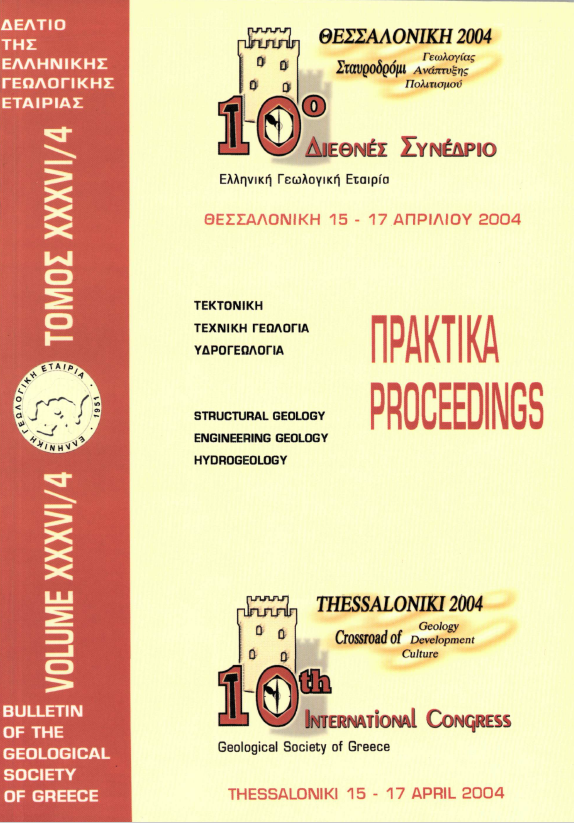BEHAVIOR OF PINDOS FLYSCH DURING TUNNELLING THROUGH A THRUST ZONE. DEFORMATION AND ROCK BEHAVIOR. EXPIERENCE FROM THE ACHELOOS RIVER DIVERSION TUNNEL TO THESSALY.
Abstract
The Acheloos diversion project consists of a series of reservoirs and a diversion tunnel. The tunnel has a designed internal diameter of 6m and a total length of ca. 17 400 m. Through the tunnel waters from the upper Achellos will be transferred to Thessaly. The project area belongs entirely to the Pindos zone. To the west (Mouzaki - Drakotrypa area) limestone, Jurassic chert and transitional strata (limestone and siltstone interchanges) overthrust sandstone and siltstone of the Pindos Flysch association (Paleogene). The thrust plane is well exposed and its geometrical features are clearly defined on the surface. Within silt- and sand- stones of the flysch, the developement of shear zones borders the thrust plane. Tunneling through limestone and chert advanced without specific problems. Tunneling through the flysch sequence slowed down the advancing rate. This was partially due to the composition and structure of the formation. The stand-up time was reduced due to compositional changes and the throughout development of shear zones. Heavy support measures were insalled and immediate monitoring began in the area where the thrust zone was developed. Data analysis and its results show that the rock formation remained into a dynamically active status. Four months after the excavation forces acting at the tunnel perimeter, exceeded the support measures bearing abilty causing tunnel radial convergence and the development of damages became visible. In this paper we describe tunneling conditions, the geology and the response of formations during excavation, as this was interpreted by monitoring data. We describe the damages caused as well as the counter measures applied in order to control and terminate the tunnel convergence.
Article Details
- How to Cite
-
Σφέικος A. Ν., & Μαρίνος Π. Γ. (2004). BEHAVIOR OF PINDOS FLYSCH DURING TUNNELLING THROUGH A THRUST ZONE. DEFORMATION AND ROCK BEHAVIOR. EXPIERENCE FROM THE ACHELOOS RIVER DIVERSION TUNNEL TO THESSALY. Bulletin of the Geological Society of Greece, 36(4), 1843–1852. https://doi.org/10.12681/bgsg.16658
- Section
- Engineering Geology, Hydrogeology, Urban Geology

This work is licensed under a Creative Commons Attribution-NonCommercial 4.0 International License.
Authors who publish with this journal agree to the following terms:
Authors retain copyright and grant the journal right of first publication with the work simultaneously licensed under a Creative Commons Attribution Non-Commercial License that allows others to share the work with an acknowledgement of the work's authorship and initial publication in this journal.
Authors are able to enter into separate, additional contractual arrangements for the non-exclusive distribution of the journal's published version of the work (e.g. post it to an institutional repository or publish it in a book), with an acknowledgement of its initial publication in this journal. Authors are permitted and encouraged to post their work online (preferably in institutional repositories or on their website) prior to and during the submission process, as it can lead to productive exchanges, as well as earlier and greater citation of published work.



